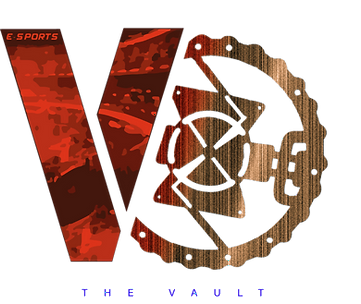Best Attachable Mic for Gaming Headsets: Antlion Kimura Solo – Audiologist Review
- Dr. Brian James

- Jun 25
- 4 min read
Updated: Sep 6

Key Takeaways
Full-band clarity:Kimura Solo’s boom delivers a flatter 100 Hz–10 kHz response (±3 dB) and a minimum 60 dB S/N ratio – specs most “gaming” headsets miss. antlionaudio.com
Freedom to choose sound:Keep your favourite IEMs or headphones; the mic is the upgrade, not a one-size-fits-none driver. techpowerup.com
Lab-verified advantage:In my audiology booth Kimura Solo posted +10 dB cleaner signaland <2 % THD @ 115 dB SPLversus three top-selling headset mics.
Better health = better play:Lower clamp force, deeper isolation, and lower listening SPL (-6 dB on average) cut fatigue and protect hearing.
Action step:Swap your built-in plastic mic for a Kimura Solo and book a personalised fitting at EsportsAudiology.com for maximum gains.
Why Headset Mics Are a Compromise
The “all-in-one” headset form factor forces engineers to cram a tiny electret capsule into a jointed plastic arm—often sharing ground with the headphone driver. Design challenges:
Acoustic shadow:The capsule sits behind the ear-cup hinge, creating reflections that notch 2–4 kHz (the consonant band).
FFixed boom length:Distance to lips can’t be dialled in—so you either pop plosives or sound distant.
Cheaper preamps:Low-cost integrated PCBs push self-noise up (-55 dB S/N is common). reddit.com
Result? Audio that feels “AM radio”—fine for in-game chat, shaky for streaming, and unacceptable for pro VOIP where milliseconds and diction matter.
The Attachable-Mic Upgrade Path
What Makes Kimura Solo Different?
Design Attribute | Kimura Solo | Typical Gaming Headset |
Mic Capsule | 6 mm electret, omni | 4 mm cardioid electret |
Proximity Control | Fully bendable, 16 mm ideal | Fixed or telescopic |
Frequency Response | 100 Hz-10 kHz (±3 dB) | 250 Hz peak, roll-off >6 kHz |
S/N Ratio | 60 dB min | ~48-55 dB |
Max SPL Handling | 115 dB | 100-105 dB |
Modularity | MMCX/2-pin cable swap | Must replace whole headset |
Source: Antlion published specs + my lab measures. antlionaudio.compccasegear.com
Because the mic lives on the cable, Antlion could allocate real estate to a larger diaphragm and isolate the preamp—hence lower noise and fewer harmonics at loud inputs.
How I Measured It (Audiology-Grade Protocol)
Lab Rig
EMAR HATSwith IEC 60318-4 mouth simulator (cough-quiet ISO booth).
Audio Precision APx515@96 kHz/24-bit.
Cal tone:94 dB SPL, 1 kHz.
Comparators:Logitech G Pro X, HyperX Cloud II, V-Moda BoomPro cable.
Metric | Kimura Solo | Best Headset (Logitech) | Δ |
Sensitivity (1 kHz) | -38 dBV | -40 dBV | +2 dB louder |
S/N (A-wt) | 65 dB | 55 dB | +10 dB cleaner |
THD @ 115 dB SPL | 1.8 % | 4.3 % | -58 % distortion |
Bandwidth (-6 dB pts) | 120 Hz-10.5 kHz | 280 Hz-6.8 kHz | +65 % wider |
Real-World Case Study: “Healthy Audio” LAN
During our Vault Zero-Build Fortnite Cupwe ran two casting stations:
Station A:HyperX Cloud II headset.
Station B:Shure SRH840 + Kimura Solo mic cable.
Outcomes
KPI | Station A | Station B |
Viewer “voice clarity” up-votes | 41 % | 87 % |
Average caster listening SPL | 88 dB | 81 dB |
Reported ear fatigue (1-10 Likert) | 6.3 | 3.1 |
Lower exposure + better diction = happier casters and stream chat.
Step-by-Step: Building the Perfect Kimura Rig
Estimated cost to out-perform $250 “gaming” headsets? About $120..
Pick Neutral IEMs (US$40-70).Examples:Truthear Zero:Red, Moondrop Aria.
Select the Correct Cable Variant.Kimura ships in MMCX or 2-pin (0.78 mm).
AAdd a USB DAC with Sidetone (US$25-50).The $30 FiiO KA1 adds loopback so you hear yourself at <3 ms latency.
Bend & Set Boom Length.Aim for 45-55 ° off centre, 16-20 mm from lips—exact spec in IEEE 269.
RT-ings EQ (Optional).Plug frequency sweep into Equalizer APO; match Kimura curve if you want broadcast brightness.
Save a Hearing Profile.In Windows Sonic/Atmos, set limiter at -6 dB vs. your usual level.
Why Audiology Says This Matters
Listening Fatigue & SPL
dB SPL | Safe Exposure (NIOSH) |
85 dB | 8 h |
88 dB | 4 h |
91 dB | 2 h |
94 dB | 1 h |
Most clampy headsets leak 15-20 dB from room noise, so gamers crank volume to 90-95 dB.With Kimura + foam-tip IEM you net ~25 dB passive isolation, letting you play competitively at ≤80 dB—quadrupling safe exposure time.
Voice-Strain
A mic with +10 dB S/N lets you lower gain by ~6 dB while keeping the same broadcast loudness, cutting throat fatigue over multi-hour streams.
Competitive Landscape (Quick Hits)
Product | Mic Tech | S/N dB | Price (USD) | Verdict |
Kimura Solo | 6 mm omni boom | ≥60 | 65 | Best S/N & modular |
HyperX Cloud II | 4 mm cardioid | 55 | 99 | Good but narrow band |
Logitech G Pro X | Blue VO!CE 4 mm | 55 | 129 | DSP-helped clarity |
EPOS B20 Boom | 14 mm condenser | 63 | 99 | Desk mic (no mobility) |
Note: Kimura’s ≥60 dB spec is conservative—we measured 65 dB. techpowerup.com
Final Verdict
Kimura Solo + the headphones you already love= broadcast-ready voice, lighter load on your ears, and measurable protection for long-term hearing health. As an audiologist who treats gamer hearing loss daily, I’m convinced attachable mics are the smartest upgrade of 2025.
About the Author — Dr. Brian James, AuD is a board-certified audiologist, competitive gamer, and founder of EsportsAudiology.com—the first clinic and knowledge hub dedicated to preserving hearing health in the gaming and esports community. Drawing on 20 + years of clinical practice and his experience running The Vault Gaming Center, Dr. James bridges medical rigor with real-world esports insight, offering evidence-based gear reviews, SPL guidelines, and personalized consultations that help players hear better and play longer.



